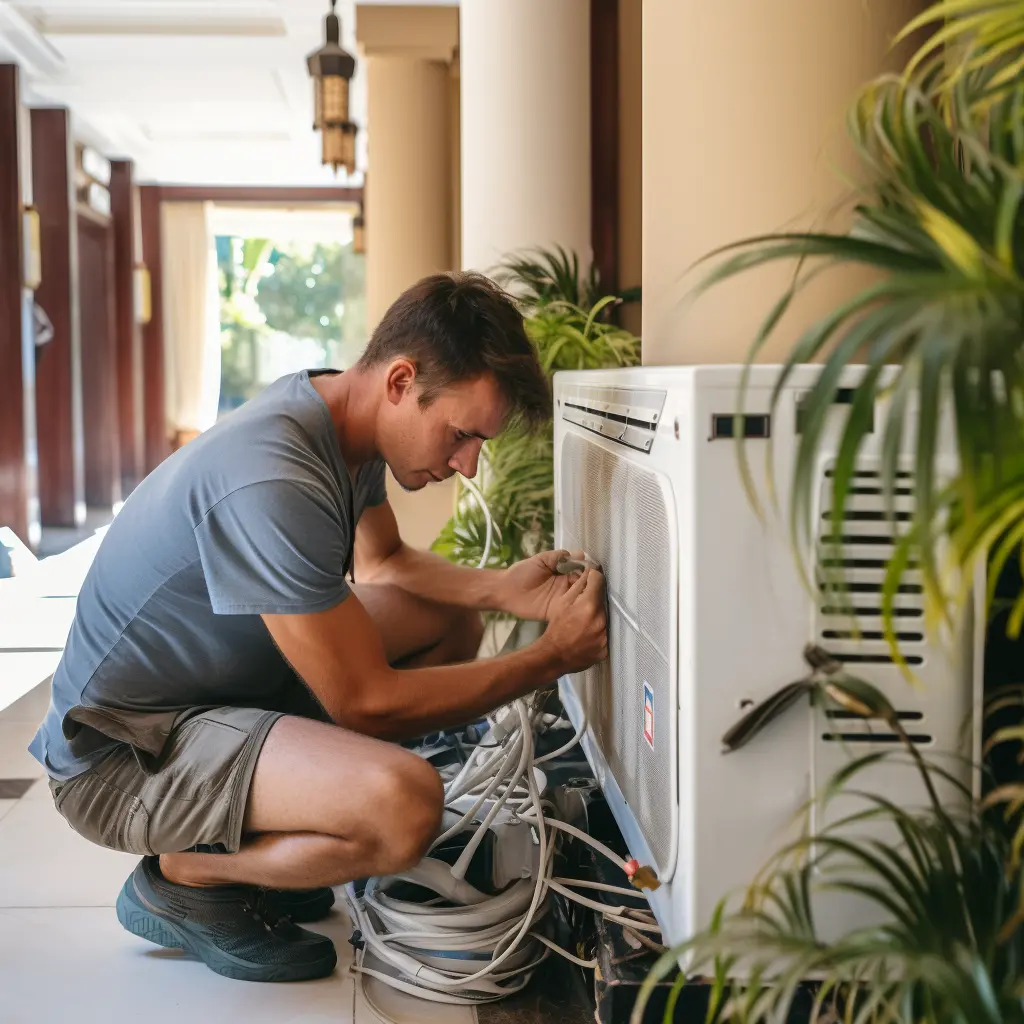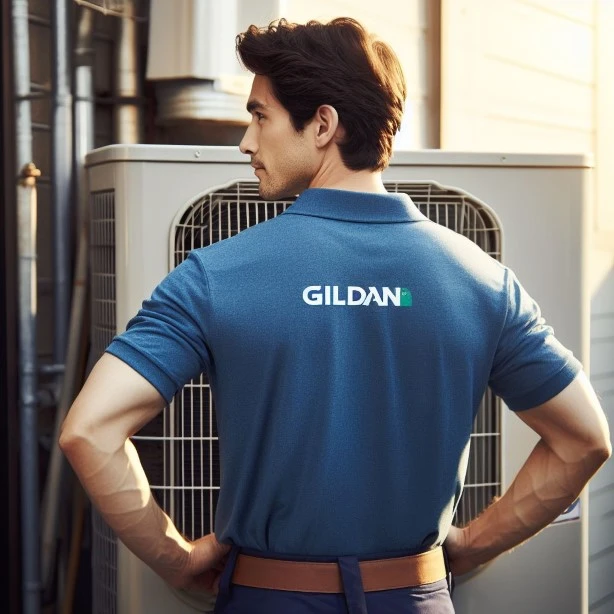The Role of Smart Thermostats in Enhancing AC Efficiency
In heating, ventilation, and air conditioning (HVAC) systems, efficiency and control have always been paramount. With the advent of smart thermostats, the ability to optimise these systems has significantly advanced. This article explores the integration of smart thermostats into AC systems, outlining how they contribute to enhanced efficiency, reduced energy consumption, and improved user comfort in Perth.
Gildan Air and Electrical stands at the forefront of delivering superior air conditioning solutions tailored to meet the diverse needs of our clients. Specialising in the installation, maintenance, and repair of high quality air conditioning systems, we are committed to ensuring optimal comfort and efficiency in both residential and commercial settings.
Understanding Smart Thermostats
Smart thermostats represent a significant evolution in the control and management of indoor climates. These devices offer a leap beyond traditional programmable thermostats by incorporating advanced technology that enables them to learn from user behaviours and adjust settings automatically for optimal comfort and efficiency. Key features include:
- Learning Capabilities: Smart thermostats can monitor user preferences for temperature at different times of the day and automatically create a schedule that matches these patterns, eliminating the need for manual programming.
- Real-Time Adjustments: They can adjust heating and cooling settings in real-time based on external factors such as changes in outdoor temperature, humidity levels, and even the occupancy of the home, thanks to sensors and real-time data.
- Remote Management: Through Wi-Fi connectivity, users can control their smart thermostats via smartphones, tablets, or web applications from anywhere, providing unparalleled control over their home’s climate.
- Energy Reports: Users receive detailed feedback on their energy consumption, including how much energy is used for heating and cooling and tips on how to reduce usage, fostering an energy efficient lifestyle.
- Smart Home Integration: These thermostats can integrate seamlessly with a wide array of smart home devices, from voice assistants like Amazon Alexa and Google Assistant to smart lights and security systems, creating a cohesive and intelligent home environment.
Enhancing AC Efficiency: The Mechanisms
The integration of smart thermostats into AC systems introduces several mechanisms that collectively enhance efficiency and reduce energy consumption:
- Adaptive Scheduling and Learning: By analysing occupancy patterns and preferred temperatures, smart thermostats generate dynamic heating and cooling schedules. This ensures that energy is not squandered on empty spaces, significantly lowering unnecessary energy consumption while maintaining comfort when the space is occupied.
- Remote Access and Control: This functionality enables users to adjust their climate control settings on the go. For instance, if an individual is returning home earlier or later than usual, they can remotely adjust their AC system to ensure the home is at the desired temperature upon arrival, enhancing comfort while optimising energy usage.
- Geofencing: Utilising the location services of users’ smartphones, geofencing allows smart thermostats to detect when residents are within a certain distance from home, adjusting the indoor climate accordingly. This feature ensures energy is not wasted when the house is empty, but comfort is quickly reinstated upon the occupants’ return.
- Energy Consumption Monitoring: By offering detailed insights into energy use and the financial implications of various temperature settings, smart thermostats educate users on their consumption patterns. This knowledge empowers users to make informed decisions, such as adjusting temperature settings or modifying schedules, to enhance efficiency and reduce costs.
- Integration with Other Smart Home Devices: Smart thermostats can coordinate with other devices to optimise indoor climates efficiently. For example, connecting with smart blinds to close when the sun is at its peak can reduce cooling needs, and integrating with smart windows to open for natural cooling during cooler times of the day can further enhance efficiency without additional energy expenditure.

Impacts on AC Efficiency: A Deeper Dive
The integration of smart thermostats into air conditioning (AC) systems heralds a paradigm shift in energy management and operational efficiency. This section delves further into the tangible impacts of smart thermostats on AC systems, highlighting their potential for energy savings, system longevity, and overall operational efficiency.
Enhanced Energy Savings
Smart thermostats contribute to energy savings through several advanced functionalities:
- Precision Cooling & Heating: By maintaining the indoor temperature within a very narrow range around the setpoint, smart thermostats prevent the overcooling or overheating often seen with less sophisticated controls. This precision avoids the excessive energy use associated with the frequent cycling of AC units.
- User Behaviour Insights: These devices can provide users with insights into their heating and cooling habits, identifying patterns that may lead to inefficiency. For example, a smart thermostat might notice that the AC is often running at full capacity when the house is empty or when minor adjustments to the setpoint could lead to significant energy savings.
- Demand Response Programs: Some smart thermostats are compatible with utility demand response programs, where users can opt to let their utility adjust their thermostat settings during peak energy demand periods in exchange for rebates or reduced energy rates. This not only contributes to individual savings but also aids in the overall energy grid’s stability.
Reduced Wear and Tear
The intelligent operation of smart thermostats extends beyond energy savings, offering benefits that contribute to the longevity and reliability of AC systems:
- Optimised Cycle Times: By learning the optimal cycle times for heating and cooling in a particular space, smart thermostats ensure that AC units are not running shorter or longer than necessary. This optimisation reduces the strain on the compressor and other critical components, directly impacting the system’s lifespan.
- Preventive Maintenance Alerts: Many smart thermostats are equipped with features that monitor system performance and alert users to potential issues before they become significant problems. For example, a thermostat might detect reduced airflow, indicating a clogged filter, and remind the user to change it, thereby preventing damage to the system.
- Seasonal Adjustments: Smart thermostats can adjust settings based on the season, ensuring that AC systems are not working harder than necessary during transitional periods. This adaptive functionality can further reduce wear and tear on the system by avoiding unnecessary operation.
Environmental Impact
The environmental implications of integrating smart thermostats into AC systems are profound. By reducing energy consumption, these devices directly decrease the carbon footprint associated with heating and cooling activities. The energy savings translate into reduced demand on power plants, many of which still rely on fossil fuels, thereby contributing to a decrease in greenhouse gas emissions. Additionally, by extending the lifespan of HVAC systems through reduced wear and tear, smart thermostats help decrease electronic waste and the environmental impact associated with the manufacturing and disposal of these systems.
Conclusion
The role of smart thermostats in enhancing AC efficiency is both transformative and multifaceted. Through intelligent scheduling, remote control, energy monitoring, and integration with other smart devices, these thermostats offer a proactive approach to energy management. The benefits extend beyond mere cost savings, encompassing improved comfort, reduced environmental impact, and enhanced system longevity. As technology advances, the potential for smart thermostats to revolutionise HVAC efficiency continues to grow, marking a significant step forward in the pursuit of sustainable and intelligent climate control solutions.

